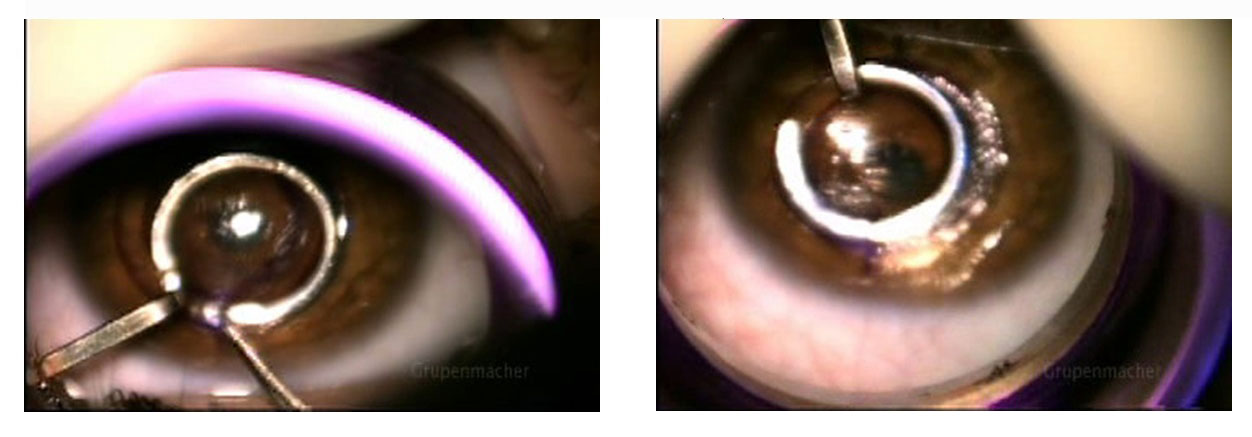
Introduction and practical application of KERARING rings
Indications for using Kerring
In keratoconus (IV, III, II, I Amsles) who cannot tolerate contact lenses and in progressive keratoconus.
In Pellucid Marginal Degeneration
In Iatrogenic Ectasia: – In ectasia after PRK, LASIK – In Irregulaz Astigmatism after PKP – In Irregulaz Astigmatism after PK
In the treatment of Corneal irregularities after trauma
The mechanism of action of karring
The effects of Kerring are done in the following way
– Since it works by the technique of adding tissue to the cornea, it causes the remodeling of the cornea, the result of which is the strength of the cornea. – By regularizing the topography of the cornea and correcting the refraction, the profile of the cornea goes to the normal side and the optical aberration is reduced, which results in better visual acuity and contact lens tolerance. – Corneal Apex goes to the middle of the pupil. – It stabilizes the cornea and delays or eliminates the need for a cornea transplant
: Effects of ring sizes
– Long rings 150, 160, 180, 210, 320, 325, 330 degrees cause cylinder correction and myopic correction (with Flattening mechanism) – short rings (90). 120 degrees (they only cause cylinder correction. Note: the effects of corneal smoothing in myopia depend on the total volume of the coring part: this means that long rings have a volume of k and short rings have a low volume, so rings with The volume of the myopic tank and cylinder are corrected, and the rings of the cylinder are corrected for the low volume.
: Ring models: Karring has three models
– SI-5 : 5 mm zone direction, which has 90, 120, 160, 210 degree pieces, each of which has a thickness of 150, 200, 250, 300, 350 microns, and the width of each ring is 600
It is a micron. – SI-6 : 6 mm zone direction, which has 90, 120, 150, 210 degree pieces, each of which has a thickness of 150, 200, 250, 300, 350 microns, and the width of each ring is 800 microns. – New rings 340 and 350 degrees that are placed in 5.7 mm zone. They have two thicknesses of 200 and 300 microns, and the 340 degree ring can be used in packet and tunnel, but the 350 ring can only be used for packet
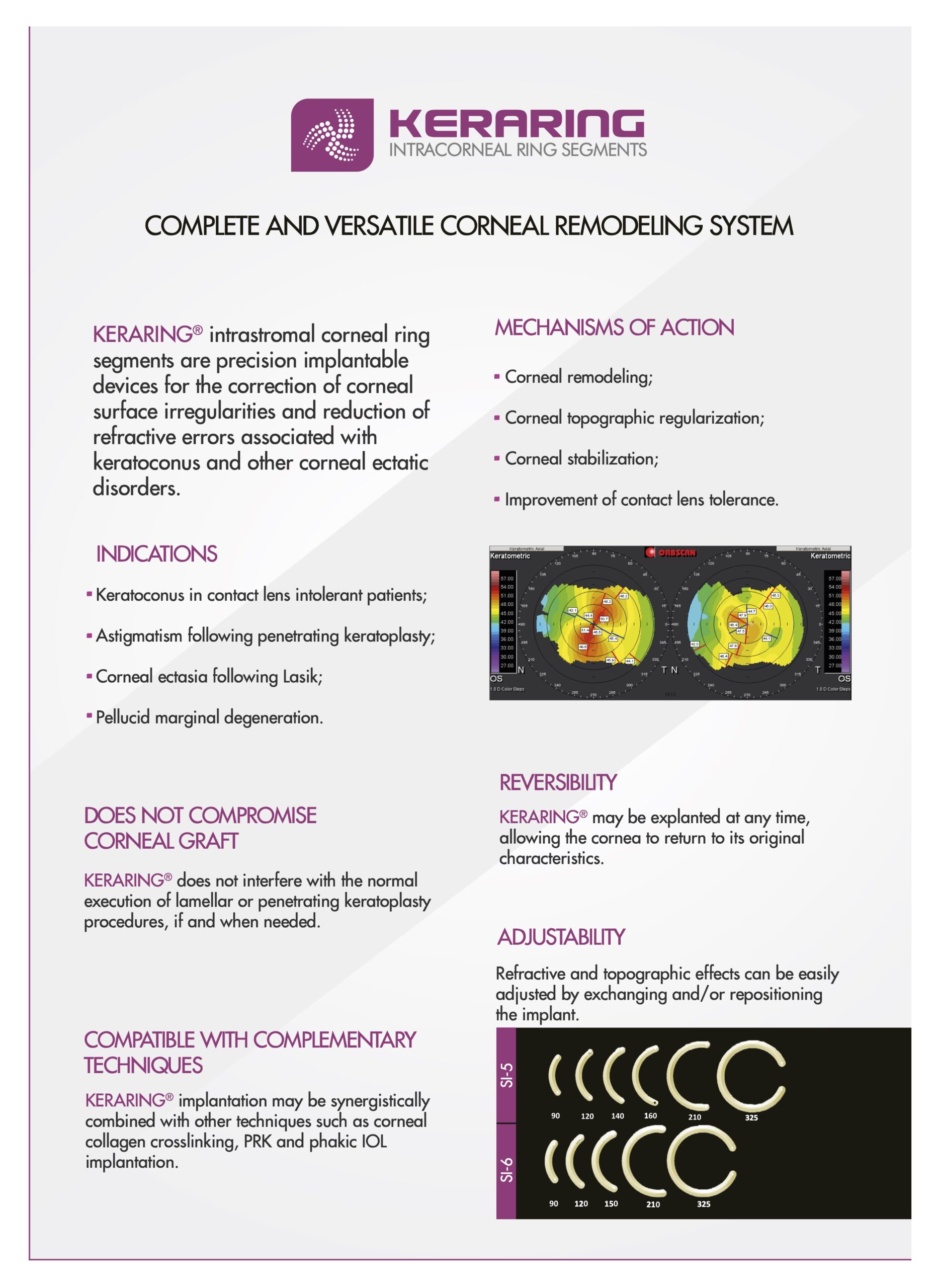
KERARING SURGICAL PLANNING
A) Information required for ring operation
Topography) Ant. Elevation map- Axil map- Sagittal (curvature map
Full page pachymetry map with full details
Manifest refrection (subjective)
BCVA
Coma map/ axis
B) Corneal Asymmetric classification and use of nemogram
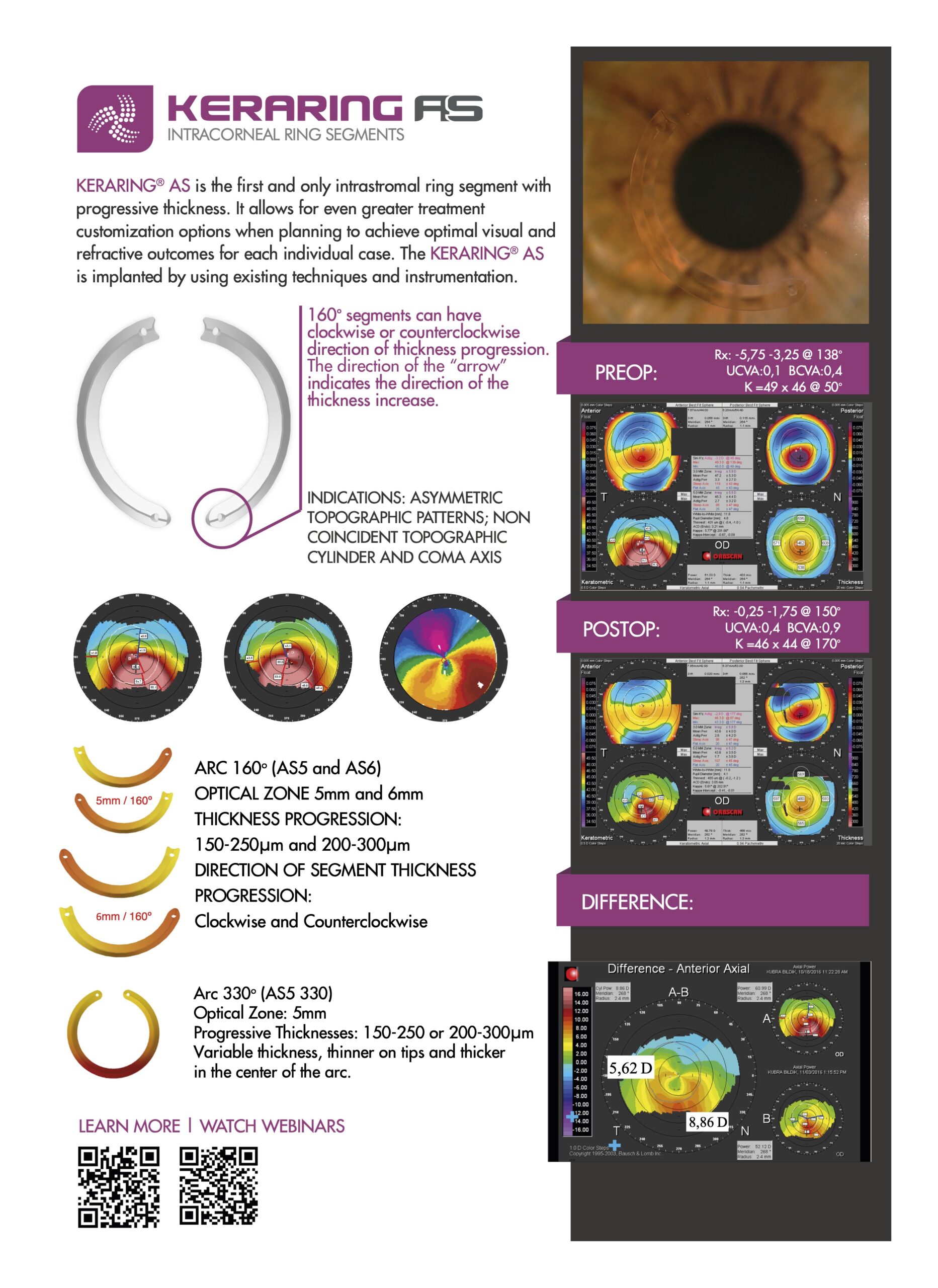
The next goal is to determine the distribution of the steep area according to the steep axis specified in the notes of part A, by which we have four types of classification: in type 1 and 2, where the distribution of the steep area is one-sided from nemogram A, and in type 3, where the distribution of the area is Steep on one side is 40% and on the other side is 60% from B nemogram and in type 4 where the distribution of steep area is 50% on one side and 50% on the other side, we use C nemogram to determine the required rings. (Image) Now, according to the nemograms, we will select the ring from Refrection of the patient’s shpere and cylinder on the nemogram
Rings usage
– In the tables, the selected rings are one or two rings, the first number of each ring is the arc of the ring and the second number of each ring is the ring thickness. For example, in the ring 160/300, the number 160 represents the degree of arc of the ring and the number 300 represents the thickness of the ring
– If the rings suggested by the nemogram are two pieces, the back piece is placed on the flatter side and the lower ring is placed on the steeper side of the steep axis ratio
– If a ring is suggested by the nemogram, that ring is placed on the steeper side
The cases where 6-SI rings are used are as follows
Mesopic pupil diameter > 0.7, BCVA more than 5 mm 5D under Cylindezvalue, BCVA > 0.6
5D under Cylindezvalue, BCVA > 0.6
When the thickness of the cornea in the region of 5 mm is not enough, if
If the cylinder is below 5 diopters, 6-SI rings can be used
When PRK or Phakic IOL placement is the second treatment method after the ring, if the cylinder was below 5D
Indication and nemogram for choosing 340 and 355 rings
These rings are indicated in central (nipple keratoconus) and are selected as follows
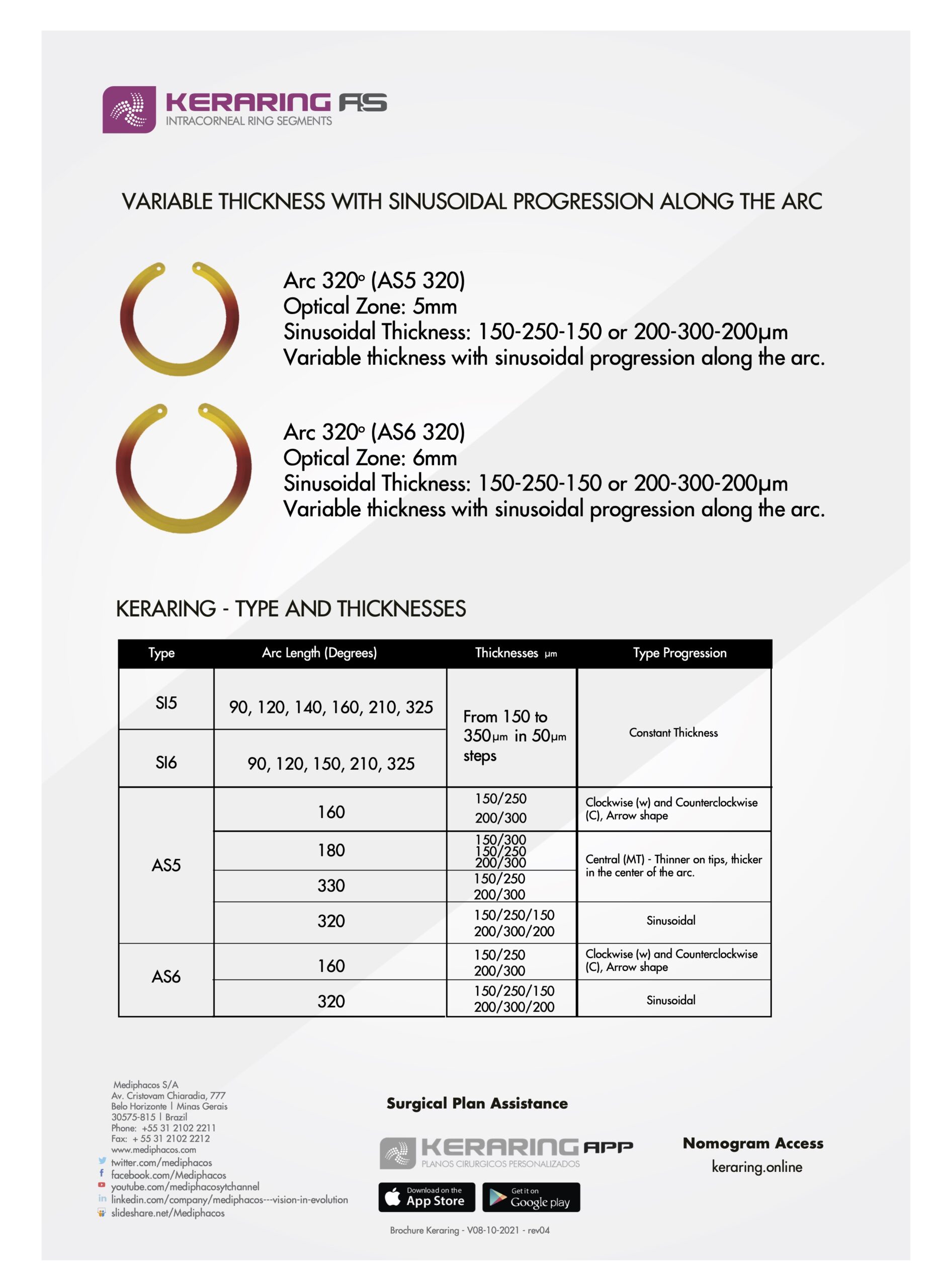
200μm thickness: for spherical equivalent < 6 D.
300μm thickness: for spherical equivalent > 6 D.
CALCULATING DEPTH AND RING THICKNESS

The ring thickness should never exceed 60% of corneal thickness on the ring zone. The central cornea pachymetry is not relevant to ring thickness or tunnel depth

Central marking on light relfex (visual axis), not center of the pupil
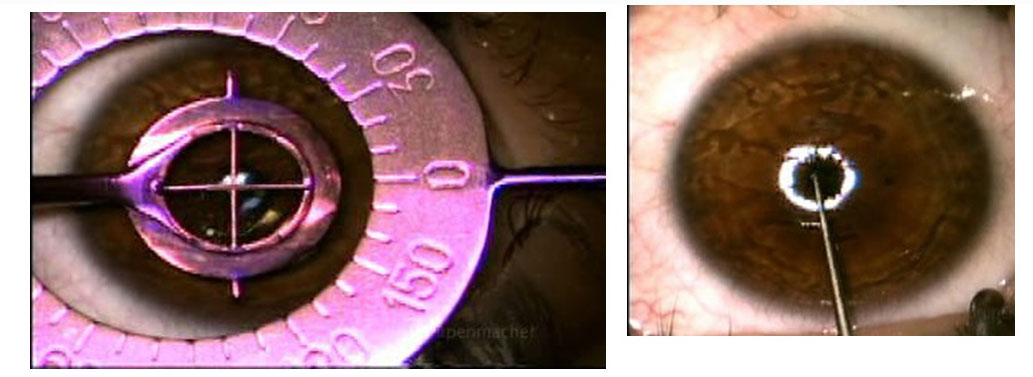
2
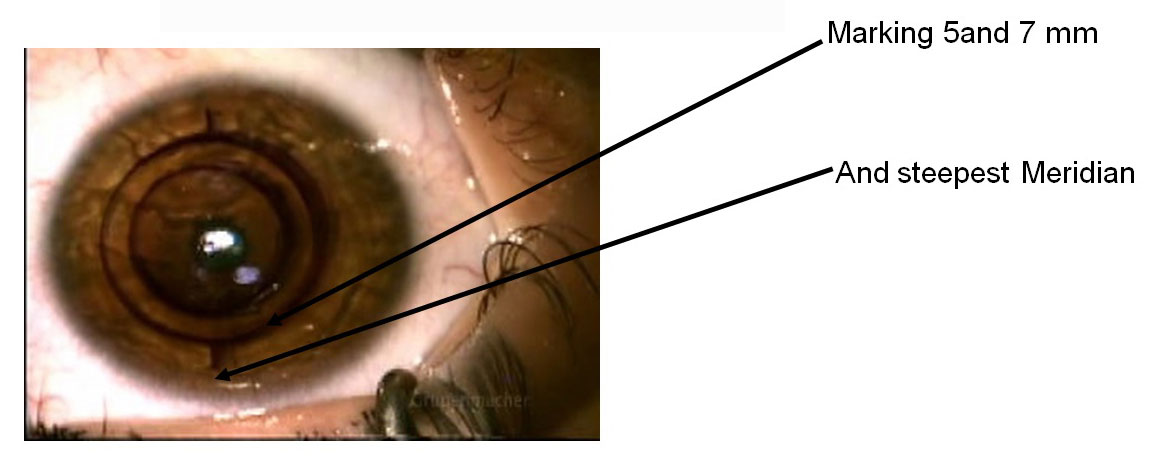
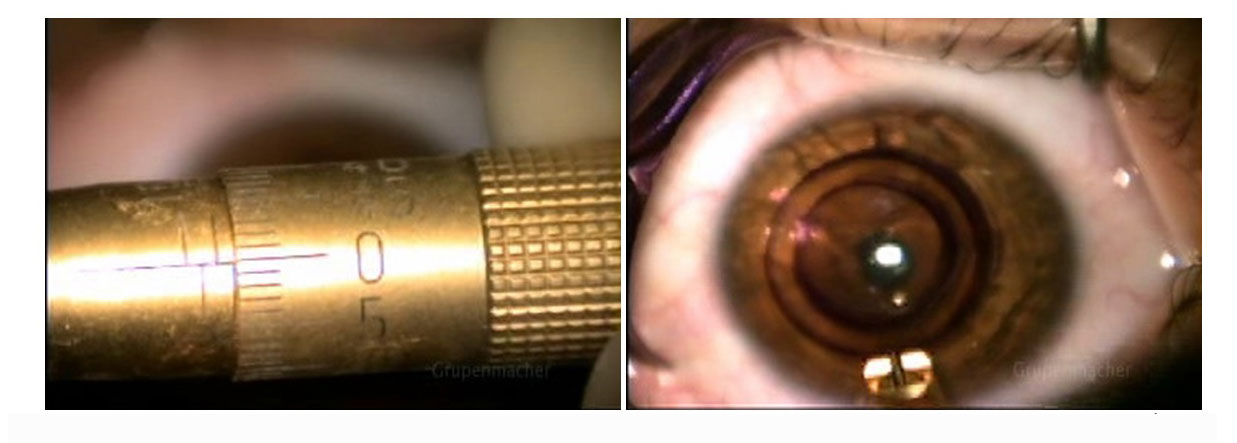
3- In manual operation, a diamond knife with a square blade is used and a vertical cut is made to a depth of 80% of the thickness of the thinnest point of the working area of the ring and in the place of the steep axis. 4- By using Micro dissector and spreader tools, the beginning of the desired tunnel is opened, and then the desired tunnel is created with right round and left round maker tools (tunnel dissector)
